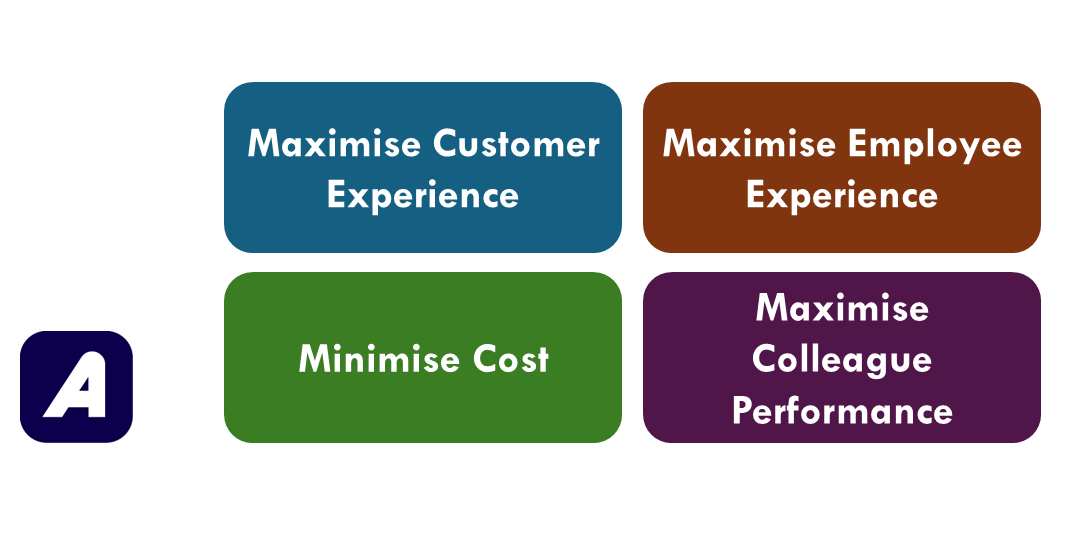The number of scheduling possibilities for a customer-facing operation can be enormous. There are many choices when building from scratch or redesigning an existing system. Initial considerations include whether to schedule employees individually, or should all in a team work the same shifts? Also should you have fixed, flexible, or rotational patterns, or a mixture?
A schedule structure is the collection of rules and patterns that are used regularly to generate schedules for colleagues. When creating a schedule structure, the four crucial objectives I seek to achieve are:
🛍️ Maximise Customer Experience
The schedule structure should enable customer queries to be addressed promptly. This means ensuring there are sufficient staff to achieve satisfactory response times across all channels. The schedule must deliver resource levels matching a sensible resource requirement for each interval. Failing to meet this objective will mean large queues across different channels, with impaired customer satisfaction, leading to degradation of future revenues.
👥 Maximise Employee Experience
A schedule structure should elevate the employee experience, which means that the schedule should ideally match the wants and needs of colleagues within the operation. It should also be perceived as fair by the colleague population. Not meeting this objective can lead to dissatisfaction of staff with their schedules – leading to disengagement, impaired performance and possibly high attrition rates and absence, which is likely to lead to poor customer outcomes and damage commercial performance.
💰 Minimise Cost
A schedule structure should help manage costs by minimising the amount of overstaffing due to schedule inflexibility. If a schedule structure does not meet this objective, certain times of the day or week will be overstaffed. Work queues may dry up, leading to colleagues not having any work to do. The cost of such pockets of availability should be minimised.
🚀 Maximise Colleague Performance
The schedule structure should support the organisation’s ability to improve and maintain performance levels. For example, a schedule where colleagues’ and supervisors’ shifts are poorly synchronised may create barriers for supervisors striving to deliver high performance.

It may be possible that all four objectives cannot be achieved to the desired levels. Compromise is therefore inevitable. The four goals must be carefully considered to ensure that the result is an optimum mix that minimises the commercial risk.
We have helped many organisations in a wide variety of industries achieve benefits by finding their optimum schedule structure. If your organisation is failing to achieve at least one of these objectives, and you would like a discussion with us, please contact us here on this website




